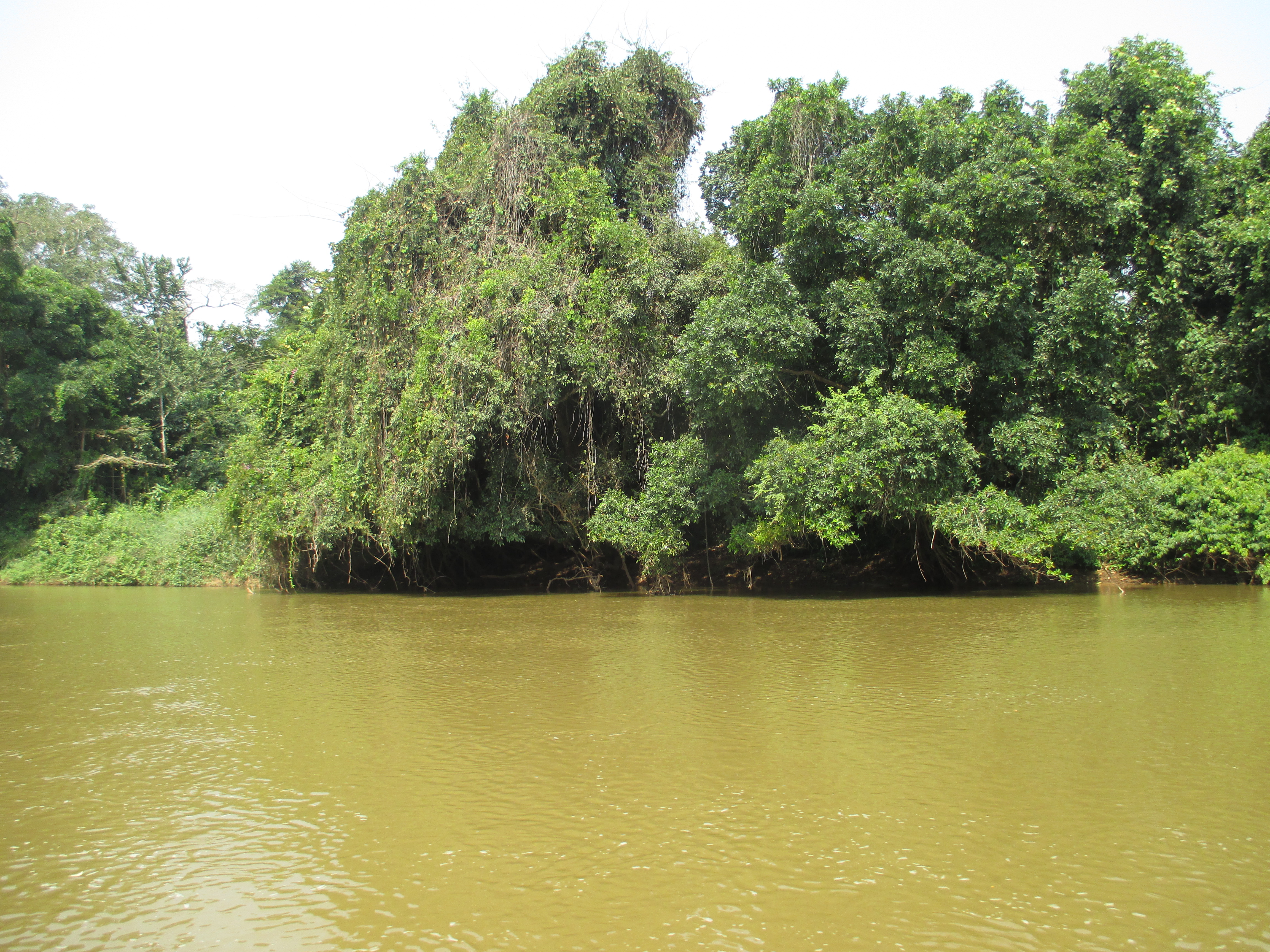

The Convention on Biological Diversity (CBD) initiated by the United Nations Environment Programme (UNEP) has three objectives: the conservation of biological diversity; the sustainable use of its components; and the fair and equitable sharing of benefits arising out of the utilization of genetic resources. In the Convention’s first Strategic Plan, adopted in 2002, the Parties committed themselves “to a more effective and coherent implementation of the three objectives of the Convention, to achieve by 2010 a significant reduction of the current rate of biodiversity loss at the global, regional and national level as a contribution to poverty alleviation and to the benefit of all life on Earth.” Nevertheless, in 2011, scientific consensus agree there stills a continuing loss of habitats and high rates of extinctions in the world. Unless urgent action is taken to reverse current trends, a wide range of services derived from ecosystems, underpinned by biodiversity, could rapidly be lost.

By decision V/10, the Conference of the Parties (COP) of the CBD decided to consider, at its sixth meeting in April 2002 (Cartagena, Colombia), the establishment of a global strategy for plant conservation (GSPC). The overall purpose of the Strategy is to achieve the three objectives of the Convention, particularly for Plant diversity. In decision VI/9, COP adopted the Global Strategy for Plant Conservation, and invited relevant organizations to endorse the strategy and contribute to its implementation. Parties and Governments were further invited to develop national and/or regional targets and to incorporate these into relevant plans, programmes and initiatives. The Strategy consists of the following five objectives:
By ratifying the Convention on Biological Diversity (CBD) in June 1994, the Government of Cameroon (GoC) recognized that the implementation of the Convention’s provisions could halt and even reverse the loss of biodiversity and degradation of ecosystems for the benefit of Cameroon and the world today and tomorrow. Conservation of biological diversity and sustainable use of its components are not the responsibility of government alone. By involving representatives of different categories of biodiversity stakeholders in the development of the National Biodiversity Strategy and Action Plan (NBSAP), it was recognized that every Cameroonian must feel concerned about biodiversity and that implementation of the NBSAP is fundamental to achieving national development and improving our individual well –being. Cameroonian law No. 96/12 of August 5, 1996 on the Framework Law on the Environmental Management, Title III, Chapter V on the management of natural resources and conservation of biological diversity, Article 62 says: “The nature protection, animal and plant species’ preservation as well as their habitat, the defense of biological balances and ecosystems, the biological and genetic diversity’s conservation against any cause of degradation and extinction’s threat are of national interest. It is the responsibility of public services and every citizen to work on the defense of the natural heritage”.
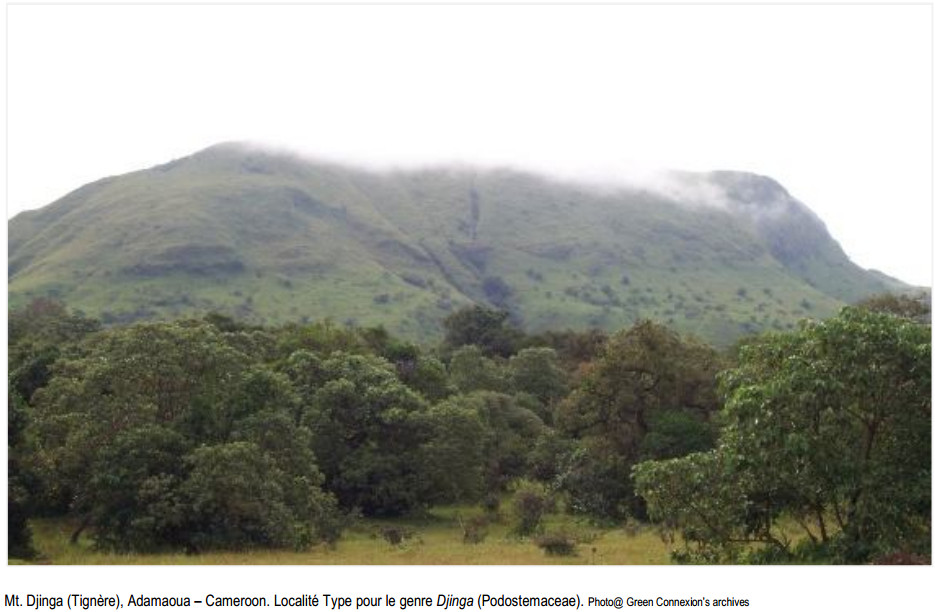
Our Strategy and action plan for plants’ conservation in Cameroon and Tropical Africa.
Green Connexion is an environmental Group, working mostly for plant’s conservation and environmental protection. For biodiversity conservation, its strategy is mostly modeled on that of the Global Strategy for Plant Conservation (GSPC) of the CBD and the National Biodiversity Strategy and Action Plan (NBSAP) of Cameroon. For environment protection, we respect the Cameroonian law No. 96/12 of August 5, 1996 on the Framework Law on the Environmental Management, Title III, Chapter V on the management of natural resources and conservation of biological diversity, Article 62.
1. Regulatory framework.

Green Connexion is a legal organization within the Cameroonian territory. It’s situated in the framework of the GSPC. Following Targets 15 and 16 of Objective V of the GSPC, the Association was created in 2008. Its legalization’s process started in 2010, and the association was signed January 2011. Today, the Association is officially registered under: Association n°00000156/RDA/J06/BAPP du 31 janvier 2011. In fact, Objective V of the GSPC recommends the development of capacities and public engagement necessary to implement the Strategy. Its Target 15 recommends that is put in place sufficient number of trained people working with appropriate facilities, according to national needs, to achieve the targets of the Strategy; and Target 16 recommends that are established or strengthened Institutions, networks and partnerships for plant conservation at national, regional and international levels to achieve the targets of this Strategy. Our immediate goal is to grow and become within the next two years an NGO. To fulfill this goal, we pledge to carry out and make effort to be successful in as much conservation work as possible. Through well targeted communication, GC’s objective is to be as present as possible within the national territory.
2. Research.

Green Connexion follows objective I of the GSPC. In fact Objective I recommends that “Plant diversity is well understood, Contents 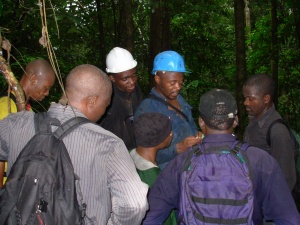 documented and recognized”, and target 1 of objective I recommends the creation of “An online Flora of all known plants”. In this respect, GC is planning to broaden more its expertise in the domain of plant’s science and to open to more collaboration worldwide, especially towards universities and research institutes. GC is a scientific organization. Therefore, its members currently carry out research in various domains: Phytogeography, Systematic, Ecology, Forestry, Chemistry, Ethnobotany as well as Social Sciences.
documented and recognized”, and target 1 of objective I recommends the creation of “An online Flora of all known plants”. In this respect, GC is planning to broaden more its expertise in the domain of plant’s science and to open to more collaboration worldwide, especially towards universities and research institutes. GC is a scientific organization. Therefore, its members currently carry out research in various domains: Phytogeography, Systematic, Ecology, Forestry, Chemistry, Ethnobotany as well as Social Sciences.
Research assistance and collaboration also fall into its priorities. Its activities in this domain are:
GC believes that most of the time, the success of a research’s mission depends on its preparation. The reason is that it’s generally not an easy task to prepare a fieldtrip that will happen in a place where naturally you are not now. GC proposes then to put its field experience at the service of researchers: Research permits’ application, communication, advice, reservation, care taking from the beginning to the end of the mission.
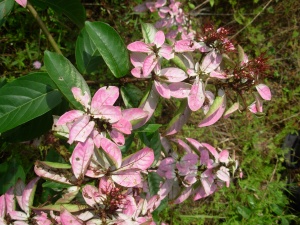
Plants’ collecting and good identification is the first resource of all plant’s professionals (researchers, teachers, town planners, gardeners, 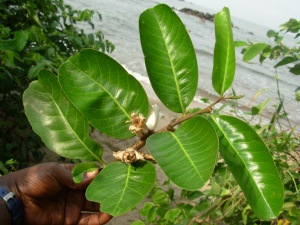 botanists, physiologists, pharmacists, chemists, biochemists, ethnobotanists etc.). When absent, these two aspects can turn a simple research sometime into a nightmare. GC’s members include the best plants’ specialists, who propose to avoid useless lost of time and
botanists, physiologists, pharmacists, chemists, biochemists, ethnobotanists etc.). When absent, these two aspects can turn a simple research sometime into a nightmare. GC’s members include the best plants’ specialists, who propose to avoid useless lost of time and
energy. GC is happy to collect plants’ biological material for your research or for your activity: Herbarium specimens, seeds or any other part of the plant, silicate gel material for DNA study or spirit material for morphological or anatomical study. GC will do this in the national regulatory frame.
Capacity building stipulated by the GSPC will pass through collaboration; and the need of various competences in the building of multidisciplinary projects requests complementarity. Therefore, GC is open to any kind of collaboration related to biodiversity conservation and environmental management and protection. The Association is opened to all national and international NGO; to universities and laboratories etc. For international organizations, there is a true advantage in associating local researchers (native or originating from the area where you want to carry out your research) to your research activity: You mutually share experiences, and among others, you gain from local researchers their field knowledge. GC is proposing to put in contact researchers of the same domain. Also, if and where there is a need of a student to start with into a new research project in Cameroon, GC is also happy to recommend one among the best students.
Universities, Organizations, Laboratories, Business, traders, pharmacies etc. dealing with plants. If your budget can’t allow you opening an office in Tropical Africa; or you already have a project that you want to advertise or carry out in Tropical Africa etc., GC is happy to represent you in Cameroon. Also, meetings and workshops etc., if you can’t attend, GC will also be happy to send a specialist to represent you, and who will send you a detailed and faithful report at the end of the meeting.
If you are planning to hold a meeting in Cameroon: Work meeting, table-ronde, conference, seminar, workshop etc., GC is happy to organize it for you in a professional way. Like this, you will be unloaded of any form of stress related to the organization.
If you are planning to carry out some research or any other activity related to plants in tropical African region especially in Cameroon, GC will provide you on real time lots of useful advice on your project feasibility, its cost, the people, the nature, the biodiversity, the security, the administration… if for any reason you are seeking for a plant in particular, we will advise you on the best way to find it.

Inventories, environmental assessment, monitoring, planning and development etc., GC will offer to your work’s quality the best specialists of the moment.
3. Plant’s assessment
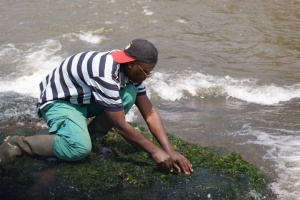
GC adheres to the objectives of CARLA (Central African Red List Authority). Some of its members belong to the executive committee of this authority, to the IUCN’s SSC (Species Survival Commission) and FBU (Freshwater Biodiversity Unit). It therefore respects Target 2
It therefore respects Target 2
of Objective I of the GSPC, stipulating that is done “An assessment of the conservation status of all known plant species, as far as possible, to guide conservation action”. Some GC’s members have so far carried out important plant’s assessment and many others are in progress. GC is planning to encourage CARLA to organize more assessment meetings on the annual or biannual base. The Association will propose its support and expertise in this respect and is also planning to organize punctual training courses in the assessment of plant’s conservation status, especially how to use the IUCN guidelines. These training courses might be mostly directed towards the university students.
4. Conservation
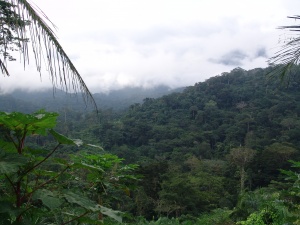
GC adheres to the CBD’s policy; and the objectives of the CBD are the conservation of biological diversity; the sustainable use of its components; and the fair and equitable sharing of benefits arising out of the utilization of genetic resources. Consequently, Objective II of the GSPC stipulates that “Plant diversity is urgently and effectively conserved“. Target 7 of this objective stipulate that “At least 75 per cent of known threatened plant species are conserved in situ” and Target 8 stipulates that are conserved “At least 75 per cent of 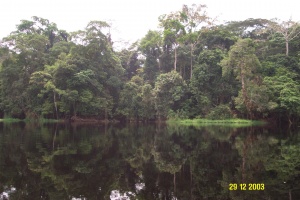 threatened plant species in ex situ collections, preferably in the country of origin, and at least 20 per cent available for recovery and restoration programmes”. Cameroon south of the Adamawa is shared between the wilderness area and the biodiversity hotspots (see in UNDP, 2004). This area hosts by far one of the most important plant diversity and endemism in tropical Africa (Linder, 2001). As for many parts of the continent and the world, the habitat loss and the biodiversity decline due to agriculture and overexploitation, is alarming. Therefore, even more than before, conservation in Cameroon is a topic up to date. In the frame of our conservation work, in the recent years, we have been restrictive in term of plant’s family. Henceforth, in front of the present alarming species’ extinction, GC is engaged to bring its expertise to the safeguard of all threatened plant species within Cameroon and where necessary and possible, in Tropical Africa. Concretely, we actively raise fund to realize conservation projects, to organize Conservation campaigns and advertisements, as well as plant inventories and monitoring etc.
threatened plant species in ex situ collections, preferably in the country of origin, and at least 20 per cent available for recovery and restoration programmes”. Cameroon south of the Adamawa is shared between the wilderness area and the biodiversity hotspots (see in UNDP, 2004). This area hosts by far one of the most important plant diversity and endemism in tropical Africa (Linder, 2001). As for many parts of the continent and the world, the habitat loss and the biodiversity decline due to agriculture and overexploitation, is alarming. Therefore, even more than before, conservation in Cameroon is a topic up to date. In the frame of our conservation work, in the recent years, we have been restrictive in term of plant’s family. Henceforth, in front of the present alarming species’ extinction, GC is engaged to bring its expertise to the safeguard of all threatened plant species within Cameroon and where necessary and possible, in Tropical Africa. Concretely, we actively raise fund to realize conservation projects, to organize Conservation campaigns and advertisements, as well as plant inventories and monitoring etc.
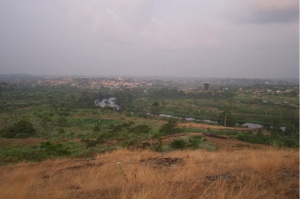
Devastated landscape at the two banks of the Nyong around Mbalmayo (seen from Nseng Nlong). Photo@Green connexion archives.
5. Education
Education is one of the most important activities of GC. In fact, Objective IV recommends the promotion of Education and awareness about plant diversity, its role in sustainable livelihoods and importance to all life on earth. In Target 14 of this objective, GSPC recommends the incorporation of the importance of plant diversity and the need for its conservation into communication, education and public awareness programmes. Our plan is that in the near future we seek for funding for supporting the professional training courses for students in the domain of biodiversity conservation and environmental protection; to organize educative discussions and seminars; to edit and publish educative posters and brochures; and to afford radio or TV educative programmes. All year round, through carefully sophisticated programs, GC will put its knowledge of the nature at the service of youth’s environmental education. Its objective is to arouse or to improve the child’s affective reaction towards the natural element.
6. Capacity building.
Capacity building is one of the first priorities for the GSPC’s implementation. In its Objective V, it recommends the development of the capacities and public engagement necessary to implement the strategy; and in its Target 15, it recommends sufficient number of trained people working with appropriate facilities, according to national needs to achieve the targets of the strategy. GC fully militates in favor of this objective. Our plan is to generally seek for solution for the GSPC’s implementation in Cameroon and in tropical Africa, but concretely, we will seek for funding for more environmental and social projects, in which it will be possible to train more people in the fundamentals of biodiversity’s Conservation as well as environment protection. For example, people will be trained on Ecotourism, Renewable energy techniques, forestry, craft, and food’s conservation etc.
7. Communication
GC is aware that all conservation initiative is directed towards the public, and believes that communication will be the first tool in this
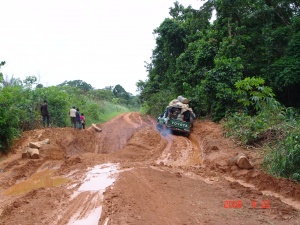
Conservation, a bit of courage and patience. Former Mamfé-Bamenda road. Photo@Green connexion archives
context. Objective IV of the GSPC recommends explicitly the promotion of Education and awareness about plant diversity, its role in sustainable livelihoods and importance to all life on earth, and in its Target 14, it recommends the incorporation of the importance of plant diversity and the need for its conservation into communication, education and public awareness programmes. GC has its own web page (www.greenconnexion-cm.org ) and e-mail address (info@greenconnexion-cm.org ). These will give it more opportunity to communicate with a large public, but will not be enough, as in rural area, internet is not part of the communication modes. Our plan for the near future will be to develop more adapted communication means, especially direct contact with local peoples and officials: Talk, Posters, radio or/and TV programmes, meetings, seminars etc.
